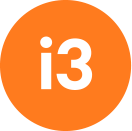A Mobile Phone Intervention Increases Physical Activity in People with Cardiovascular Disease: Results from the HEART Randomised Controlled Trial
Maddison, R; Pfaeffli, L; Whittaker, R; Stewart, R; Kerr, A; Jiang, Y; Kira, G; Leung, W; Dalleck, L; Carter, K; Rawstorn, J; (2014)
European Journal of Preventive Cardiology Jun 2015; 22(6):701-9. DOI:10.1177/2047487314535076. Epub May 2014
AIM: To determine the effectiveness and cost-effectiveness of a mobile phone intervention to improve exercise capacity and physical activity behaviour in people with ischaemic heart disease (IHD).
METHODS/RESULTS: In this single-blind, parallel, two-arm, randomized controlled trial adults (n = 171) with IHD were randomized to receive a mobile phone delivered intervention (HEART; n = 85) plus usual care, or usual care alone (n = 86). Adult participants aged 18 years or more, with a diagnosis of IHD, were clinically stable as outpatients, able to perform exercise, able to understand and write English, and had access to the Internet. The HEART (Heart Exercise And Remote Technologies) intervention involved a personalized, automated package of text messages and a secure website with video messages aimed at increasing exercise behaviour, delivered over 24 weeks. All participants were able to access usual community-based cardiac rehabilitation, which involves encouragement of physical activity and an offer to join a local cardiac support club.
All outcomes were assessed at baseline and 24 weeks and included peak oxygen uptake (PVO2; primary outcome), self-reported physical activity, health-related quality of life, self-efficacy and motivation (secondary outcomes). Results showed no differences in PVO2 between the two groups (difference −0.21 ml kg−1 min−1, 95% CI: −1.1, 0.7; p = 0.65) at 24 weeks. However significant treatment effects were observed for selected secondary outcomes, including leisure time physical activity (difference 110.2 min/week, 95% CI: −0.8, 221.3; p = 0.05) and walking (difference 151.4 min/week, 95% CI: 27.6, 275.2; p = 0.02). There were also significant improvements in self-efficacy to be active (difference 6.2%, 95% CI: 0.2, 12.2; p = 0.04) and the general health domain of the SF36 (difference 2.1, 95% CI: 0.1, 4.1; p = 0.03) at 24 weeks. The HEART programme was considered likely to be cost-effective for leisure time activity and walking.
CONCLUSIONS: A mobile phone intervention was not effective at increasing exercise capacity over and above usual care. The intervention was effective and probably cost-effective for increasing physical activity and may have the potential to augment existing cardiac rehabilitation services.


